PRG at the 4th International Faecal Sludge Management
Conference Chennai, India (19th to 22nd February 2017)
FSM4 Committee and Planning
The PRG have been involved in the organisation of all 4 Faecal Sludge Management conferences.
The first two were in Durban in 2011 and 2012 with an attendance of 120 and 320. The third conference was held in Vietnam in 2015 and 750 attended.
The most recent conference, FSM4, was held in Chennai in 2017 and approximately 1 200 delegates attended. The guests of honour included the South African Minister of Water and Sanitation, Nomvula Mokanyane; Honorable M. Venkaiah Naidu, Minister, Ministry of Urban Development, India; H.H. Pujya Swami Chidanand Saraswatiji.
The PRG members of the Organising Committee (Dr Tina Velkushanova, Dr Santiago Septien and Prof Chris Buckley) were responsible for organising the Research track of the conference. The other two tracks were Case Studies and Industry. Over 70 research papers, 40 research posters and 10 workshops were held over a four-day period.
PRG members will be involved in the organisation of FSM 5 which will be held in February 2019 in Africa.
Figure 1: Members of the FSM4 Organising Committee
Presentations and Workshops
PRG were involved in the following presentations over the course of the conference:
• Study of LaDePa process for the treatment of faecal sludge from VIP latrines
• Rheological, viscoelastic and plastic properties of faecal sludge from VIP latrines
• Findings from an SFD for Durban
The PRG team was present in the workshops offered during the FSM4 conference.
One day before the beginning of the conference, the Water Research Commission organized a workshop on the Sanitation Research Fund for Africa (SRFA). The workshop was led by Dr. Sudhir Pillay, a PRG alumnus now working for the WRC. The workshop shows recent advances in R&D carried out in the African context and included talks from institutions making an impact in the sanitation sector with good practices and innovations. After the presentations, an expert panel was invited to continue discussions on what has been done so far and perspectives for the future. The audience was not shy at all and participated in the discussions during an afternoon full of talks around sanitation. The PRG team did not miss the opportunity to start the conference with this insightful workshop, which was the perfect aperitif before the big event. If you want to know more about the SRFA project (and we advise it!), please visit the following website: http://www.susana.org/en/resources/projects/details/121.
Three very nice days passed (too fast!) and the FSM 4 conference finished with a session of parallel workshops. The PRG team was leading one of the workshop, about the characterization and quantification of faecal sludge. The moderator of the session was a member of our team, Dr. Konstantina Velkushanova. Unfortunately, she could not make it to the conference because of visa challenges. Luckily, 21st century technology enabled her to moderate the session from South Africa (a big thanks to the Skype programmers!), and members of the PRG team also assisted with the moderation in the room. The workshop was the starting point of a project to develop a book of standard methods for faecal sludge analysis, something that is sorely needed in the sanitation sector! The workshop gathered the collaborators of this project and other experts to start a discussion on the setup of this manual with standardised methods to analyse faecal sludge. The workshop started with the introduction of the participants, then some presentations followed with discussions, and the last part was an interesting talk about the challenges to overcome, sharing thoughts and brainstorming (we could even say “brain hurricane”!). All the participants were satisfied by the workshop which had plenty of interesting talks and left the participants excited by the idea that a manual of standard method for faecal sludge analysis could be available soon. Tina, on the other side of the globe, was happy with the outputs of the workshop and with the excellent launch of the project that she is leading (and a bit exhausted from getting up early on account of the time difference!).
Other workshops were held in parallel, with a strong representation from PRG. Colleen Archer ran a workshop for the development of a uniform Soil Transmitted Helminth analysis consortium for analysing faecal waste samples. During this workshop, Colleen Archer showed her method for the analysis of Helminths. This method has been a big success in the sanitation sector, so this workshop was the opportunity to spread the word and shown how to apply it.
Dr. Rebecca Sindall, another member of the PRG crew, attended the workshop about faecal sludge management in emergencies. This is an important subject within sanitation, as every year there are catastrophes that occur, caused by natural events and wars, where sanitation systems are destroyed or disrupted and sanitation provision needs to be restored to the affected populations quickly in order to avoid the spread of disease. Through the presentation of case studies and group discussions, the workshop introduced the main factors to consider for faecal sludge management in the emergency context and viable solutions depending on the geographical context.
At the end of the sanitation emergency workshop that lasted only half a day, Becky was still hungry to know more about faecal sludge and she joined another half day workshop. This was the perfect way to end the conference, through a highly interactive workshop session that demonstrated the concepts of Sanitation Safety Planning for Faecal Sludge Management.
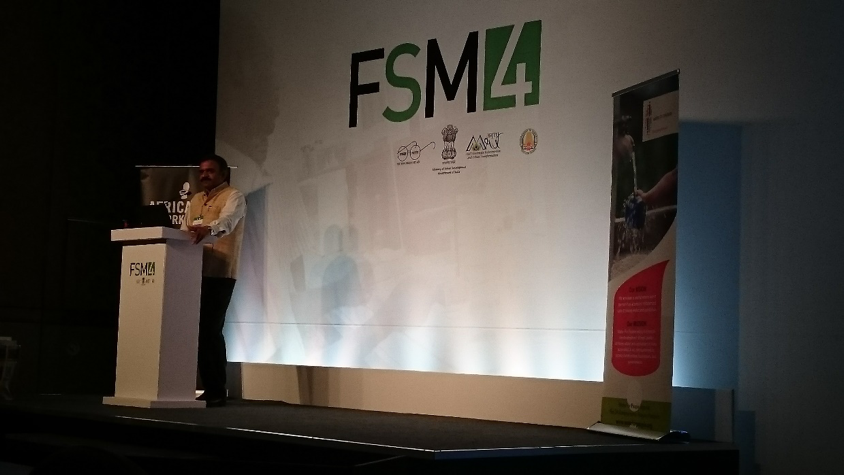
Figure 2: Dr. Suresh Kumar Rohilla, from the Center of Science & Environment (New Delhi, India), during the SRFA workshop
Post FSM4 Conference Field Trips
Consortium for DEWATS Disseminations (CDD), Society, Bangalore
After the FSM4 conference, the PRG team visited different research organisations making use of new treatment technologies, treatment plants and laboratories.
In Bangalore, two days were spent at the Consortium for DEWATS Disseminations (CDD) Society. At this vibrant sanitation centre the PRG were provided with a tour of the CDD DEWATS plant, how it operates and their community outreach programmes. What was amazing about this programme is the use of visual art to convey the challenges of sanitation in India. These are challenges experienced from both the service provider’s point of view with the waste found in pits and desludging, as well as the end user point of view - the people who are given toilets but misuse them or fail to look after them.
| | | | | | | | | |
| | | | | 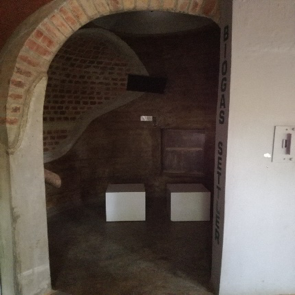 | | 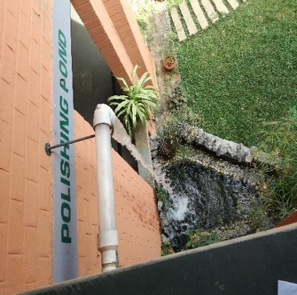 | | 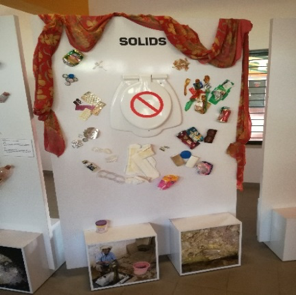 |
| | | | |
|
|
|
|
|
|
| | | | | Figure 3: Demonstration of the DEWATS plant from the biogas settler, settling pond and waste found in pits. |
| | | | | | | | | |
| | | | |  |  | | 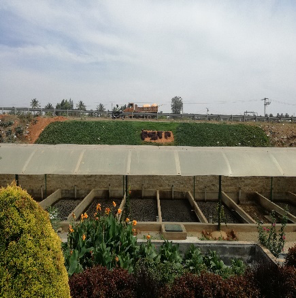 | |
| | | | | Figure 4: Faecal sludge treatment plant in Devabahalli |
The CDD Society is at a trial stage of the first Faecal Sludge Treatment Plant (FSTP) in Devanahalli. On a daily basis, this FSTP receives about 4 000 L of faecal sludge from pit latrines. The faecal sludge is screened in a 6 000 L capacity chamber for a few hours before being discharged to a biogas settler to harvest biogas that is currently used by the staff to cook. As the settler is filled, sludge moves into a stabilisation tank. The settled sludge is discharged into drying beds and the liquid content is treated in the anaerobic baffled reactor followed by a vertical gravel filtration system. The dried sludge is turned into compost and the water is collected into a collection tank to be used for irrigation. At this point, CDD and PRG engaged in a discussion, exchanging information from experiences dealing with faecal sludge.
Following the site visit, the PRG team prepared for presentations and laboratory training. Discussions were held around health and safety, laboratory housekeeping, sample analysis and data interpretation. This was of great interest for the CDD team as they have not previously dealt with faecal sludge and now need to adapt their methods for this type of sample. After this, the PRG team toured the laboratory and provide guidance on how to optimise the space for faecal sludge testing.
As with all such trips, there is never enough time to do everything, there is always more to share but not enough time!
Visit to Tide Technocrats, Bangalore
Dr. Santiago Septien Stringel met the Tide Technocrats team (India) and Jeff Hallowell from Biomass Controls (USA), in Bangalore a few days after FSM4. The objective of the meeting was to discuss improving the thermal processes of a future faecal sludge treatment plant. The first discussions were held over a delicious southern Indian lunch.
The meeting with Tide Technocrats continued with a visit to the Indian Institute of Science, in order to meet gurus of biomass thermochemical conversion, Dr. Dassapa and Dr. Chanakya, who guided us towards the setup of an optimal thermal process for the faecal sludge plant. After the short meeting which was just enough to illuminate our minds and inspire us, we visited the thermochemical laboratory where we saw impressive biomass gasifiers of all sizes. Finally, we left the University to visit the future faecal sludge plant.
On the way to the faecal sludge plant, we passed through an area of the city from which Bangalore gets the name the Palace City. After approximately one hour and a half drive, we arrived to the future faecal sludge plant of Tide Technocrats. At that time, we could not see too much, as the commissioning of the plant had just started. Most of the space was empty with only some pieces of equipment visible, but we could imagine how the faecal sludge plant will be setup and operate. Faecal sludge from septic tanks will be discharged to a large holding tank. The rubbish and sand will be separated from the faecal sludge using a grid separation system and settling. The sludge will be disinfected by heating and then it will be dewatered. The solid fraction will be dried and fed into a pyrolyzer to produce bio-char. The heat released by the combustor will be recovered for the disinfection and drying of the sludge. Meanwhile, the liquid fraction will undergo aerobic degradation and the effluent used for irrigation.
In the same facility, a laboratory for monitoring the plant was also under installation. There, we shared some soft drinks with young scientific and engineering members of the team, and we had some discussions on the operation of the plant. They described in more detail how the plant will operate and they asked for advice on optimising the thermal treatment processes. The visit finished with the classic group photo.
Figure 5: Discussions with Tide Technocrats staff (at the center and left) and Dr. Dasappa (at the right)
Figure 6: Site for the future faecal sludge treatment plant of Tide Technocrats
Figure 7: Model of the faecal sludge treatment plant of Tide Technocrats
Figure 8: Dr. Santiago Septien Stringel (third from the left) and technical staff from Tide Technocrats
University of South Florida NEWGenerator field trial, Pulluvilla
The NEWGenerator is located at a school in Pulluvilla, near Trivandrum in Kerala, India. The field test was chosen to be at school since they wanted high usage and assess how effective it was.
The NEWGenerator is an independent, solar-powered and non-sewered resource recovery unit. It uses membrane biotechnology for the recovery and generation of energy and clean water. The advantage of the system is it does not need any external water or power sources.
The system consists of an anaerobic baffled reactor where solid waste and wastewater from the school toilets is stored and microbes feed on it and produce methane gas, which can be used to create energy. The NEWGenerator then pulls wastewater from the tank and filters it through a membrane. The water is chlorinated for future toilet flushing and hand washing. The membrane removes bacteria and viruses. There are also storage tanks, which can be used to store recycled water. The system can handle up to 400 people/day.
On the roof, there are solar panels, which charge the generator’s batteries. On the sides of the container there are non-edible plants contained in row of pipes, which are sustained hydroponically using the nutrients and clean water from the system.
Sampling was carried out 3 times per week for pH, turbidity, colour and COD. Weekly samples were taken for solids and microbial analysis. The analysis done proved that the system was working quite well.
The system encountered some challenges in the school setting. For example, plants and parts from the lower section of the system attached to the outside of the container were missing, as the younger children were curious and often uprooted easily accessible plants.
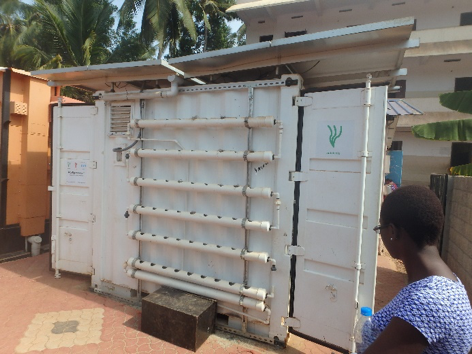 Figure 9:
Figure 9: Ellen considering how to make the hydroponic growing tubes less appealling to small children at the NEWGenerator pilot trial in Pulluvilla, near Trivandrum in Kerala, India
Reflections on FSM4 by Rebecca Sindall
Post-doctoral Fellow at the PRG
I spent last week at the 4th International Faecal Sludge Management Conference in Chennai, India. It was a packed week of presentations, workshops, meetings and networking with over 1000 people with an interest in addressing the challenges of global sanitation. I have slowly been processing the things that I heard, saw and learnt and I have summarised some of my most important points below.
First, sanitation incorporates the full service chain from capturing waste in toilets, containing it and transporting it to a treatment facility, treating and finally safely disposing or reusing the treated waste. Simply building toilets is not enough and more and more, people are focusing on multiple links within that service chain. This change in approach has taken time to find a foothold but now it is here, it is here to stay.
Taking the sanitation service chain into account, and then adding in the wide variety of sanitation options available to different sections of the population in a rapidly developing city gives an idea of the complexity of urban sanitation systems. They can include everything from sewage networks and septic tanks (which may or may not work) to pit latrines (which may or may be emptied) and open defecation. Complex problems rarely have simple solutions and a wide range of players need to be involved in providing sanitation for all. These diverse players include researchers, entrepreneurs, government officials, municipal workers, NGOs, engineers, social scientists, and policy advisors as well as people of different races, ages and genders. All of these people were represented at the conference and collaboration between them is the key to successful sanitation systems.
It is no surprise that many people have a preferred technology or approach. This could be the system they work most closely with or the approach that they perceive to have the greatest impact. However, in a complex system and with the huge variations between contexts in different countries and settings, there will never be a single best solution. The ‘perfect’ solution for one context could fail spectacularly in another context and in order to achieve sanitation for all, it will be necessary for a whole suite of solutions to work.
There is an increasing focus on “toilet resources” and turning waste into valuable by-products including fuel and fertiliser. Whilst it is great that the circular economy is being considered, the sector must not lose sight of the fact that sanitation is foremost an issue of human health and that by-products are of no value unless a viable market exists. To date, none of the social enterprises in the field of sanitation is self-sustaining and careful thought needs to go into the markets for by-products if they are to be a key component in the long-term success of sanitation businesses.
Like with many topics in the charitable and international development sector, achieving scale is a much-discussed goal in sanitation. Nevertheless, for all the people who talk about scale, few can define what scale looks like. Steve Sugden, from Water for People, suggested that scale is not an absolute number, but a characteristic of a system, which increasingly allows more to be achieved for less money. If scale is to be one of the key goals in the world of sanitation, and it should be, we need to improve our understanding of what scale means and how we get there.
As I mentioned above, sanitation is primarily a matter of human health and we need to focus on the biggest risks to human health first and ensure that we do not allow perfect to get in the way of good. Taking a risk-based approach to sanitation and making use of the tools available to understand where the biggest risks exist in the system allows us to achieve the biggest bang for our buck. These tools include shit flow diagrams (SFDs), sanitation safety plans (SSP) and quantitative microbial risk assessments (QMRAs) and it was refreshing to see them being adopted by an increasing number of actors in the field of sanitation.
The conference left me with plenty of new ideas and challenges to consider and several leads to follow up on. First, however, I think I need some sleep…